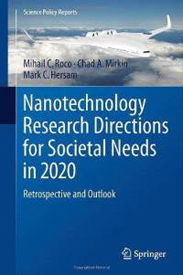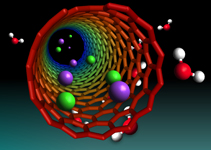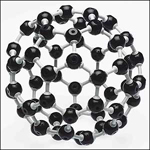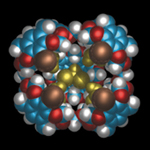 |
The Age of Carbon:
Buckyballs, Nanotubes, Graphene, and Beyond
Dr. Mark Hersam
Northwestern University
7pm Friday
May 24th, 2013 |
Purchase Tickets
Season Tickets for this event are available at 503-232-2300 or online here!
Buy Season
Tickets Online!
(Search =Linus)
New Ticketing
System with no ticketing charge,
only $3.25 total
for mailing
Season Tickets. |
Dr. Mark
Hersam
Northwestern University
Mark C. Hersam is currently a Professor of Materials Science and Engineering, Chemistry, and Medicine at Northwestern University. He earned a B.S. in Electrical Engineering from the University of Illinois at Urbana-Champaign (UIUC) in 1996, M.Phil. in Physics from the University of Cambridge in 1997, and a Ph.D. in Electrical Engineering from UIUC in 2000. In 1999, he also performed research at the IBM T. J. Watson Research Laboratory under the support of an IBM Distinguished Fellowship. His research interests include single molecule chemistry, nanofabrication, scanning probe microscopy, semiconductor surfaces, and carbon nanomaterials. As a faculty member, Dr. Hersam has received several awards including the Beckman Young Investigator Award, NSF CAREER Award, ARO Young Investigator Award, ONR Young Investigator Award, Sloan Research Fellowship, Presidential Early Career Award for Scientists and Engineers, TMS Robert Lansing Hardy Award, AVS Peter Mark Award, ECS SES Research Young Investigator Award, MRS Outstanding Young Investigator Award, and four Teacher of the Year Awards. In recognition of his early career accomplishments, Dr. Hersam was directly promoted from assistant professor to full professor with tenure in 2006. In 2007, Dr. Hersam co-founded NanoIntegris, which is a start-up company focused on supplying high performance carbon nanomaterials. Dr. Hersam is actively involved in professional societies including serving as the Chair of the AVS Nanometer-scale Science and Technology Division and as Associate Editor of ACS Nano.
|
Advances in human civilization have historically been correlated with the advent of new materials such as the stone age, bronze age, and iron age. More recently, with the broad societal impact of microelectronics, the past half-century could justifiably be labeled the silicon age. This historical precedent then begs the following question: What will be the defining material of the 21st century? With substantial progress made in research laboratories globally over the past two decades including the 1996 Nobel Prize in Chemistry for the buckyball and the 2010 Nobel Prize in Physics for graphene, it is increasingly likely that we are about to usher in the age of carbon. This lecture will provide recent highlights from the rapidly evolving field of carbon nanomaterials including molecular forms of carbon (buckyballs), cylindrical forms of carbon (nanotubes), and planar forms of carbon (graphene). In addition, the potential utility of carbon nanomaterials in real-world applications will be delineated including information technology, biotechnology, and alternative energy. |

|






